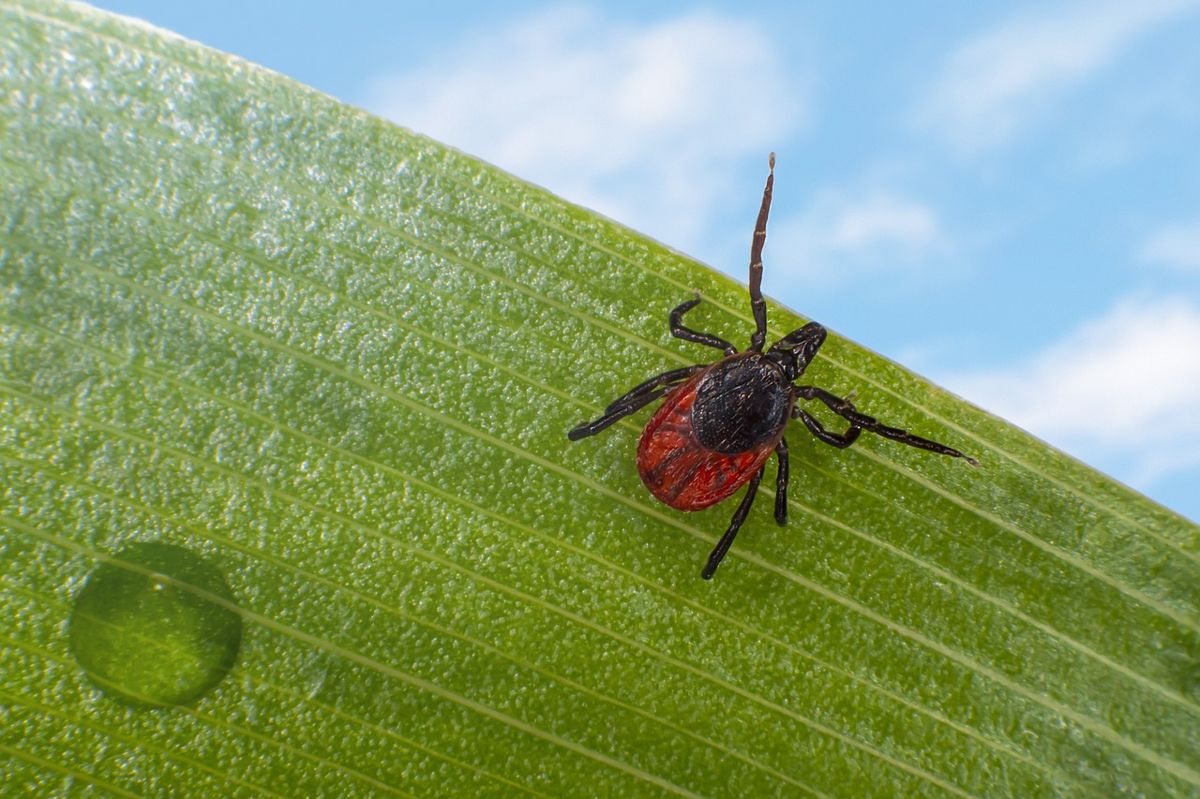With the return of spring, ticks are back in force. This poses a significant risk to our four-legged friends. These small parasites can transmit various dangerous diseases to dogs. It is therefore crucial to understand how to effectively protect our pets.
What is a tick? #
Ticks are small mites - only a few millimeters - that feed on blood. They attach to the skin of humans and animals, including dogs, and can transmit serious diseases. Ticks go through several stages of development: larva, nymph, and adult. Each stage requires a blood meal to progress to the next stage.
Ticks are often found in tall grass, woods, and brush. They detect body heat and carbon dioxide emitted by their potential hosts. As soon as they find their victim, they latch on as they pass by!
Once attached, they insert their mouthparts into the skin to feed on blood. They can remain attached for several days, thus increasing the risk of disease transmission. According to Santé Vet, it typically takes between 3 and 7 days for them to engorge themselves with blood. Once this period has passed, they drop off.

The risks of a tick bite for dogs #
Ticks can transmit several serious diseases to dogs. Generally, it takes at least 24 hours for a disease to be transmitted from the tick to your pet. Among the most common are the following diseases:
-
Lyme disease (or borreliosis): Caused by the bacterium Borrelia burgdorferi, it can cause symptoms such as fever, fatigue, loss of appetite, and joint pain. Like in humans, it can lead to serious complications such as chronic arthritis if not treated.
-
Ehrlichiosis: Caused by the bacterium Ehrlichia, this disease can lead to various symptoms. These include fever, lethargy, weight loss, and abnormal bleeding. Infected dogs can also suffer from neurological disorders if the disease is not diagnosed and treated quickly.
-
Babesiosis: Transmitted by the parasite Babesia, it affects red blood cells, leading to anemia, weakness, and jaundice. This disease can be particularly severe and require immediate veterinary intervention.
The symptoms of tick-borne diseases can appear weeks or even months after the bite. It is therefore essential to closely monitor your dog and consult a veterinarian at the first sign of worrying symptoms.
Where are ticks found? #
Ticks prefer moist and wooded environments. They are therefore often found in places conducive to walking:
-
Forests: Wooded areas provide an ideal habitat for ticks. Dogs walking in these areas are particularly at risk. With dense vegetation and wild animals, it’s a perfect playground for these parasites.
-
Meadows and fields: Tall grass and brush are favored spots for these parasites. Ticks climb onto blades of grass and wait for a host to pass by.
-
Parks and gardens: Even urban green spaces can harbor ticks, especially if the areas are frequented by other animals. Ticks can also be found in private gardens, particularly if they are visited by wild animals like deer or foxes.
Seasonality plays a crucial role in tick activity. They are generally more active in spring and autumn, although some species may be present all year round in milder climates. Dog owners must be particularly vigilant during these peak periods.

How to prevent tick bites? #
Prevention is key to protecting your dog from ticks. Here are some effective methods:
- Preventive treatments: Using tick collars, spot-ons, or tablets can be enough to prevent tick bites. These products are available at veterinarians and pet stores. They are designed to kill or repel ticks before they can attach to your dog. It is important to follow the product instructions and adhere to application schedules for maximum effectiveness.
⚠️ Many owners notice today a decrease in their effectiveness. Over the years, ticks may have become accustomed to these products, which are therefore more or less effective.
-
Shampoos and sprays: Topical products can also help prevent tick infestations. Use tick shampoos regularly, especially after walks in risky areas. Sprays can be applied directly to the dog’s coat before outings for additional protection.
-
Regular checks: After each walk, carefully examine your dog, particularly around the ears, neck, paws, and belly. Ticks can be the size of a pinhead, so it is crucial to be thorough. Use a fine-toothed comb to inspect the fur and check for ticks.
-
Avoid risky areas: During walks, try to stay on trails and avoid tall grass and wooded areas, especially during periods of high tick activity. If possible, choose walking areas where the vegetation is well maintained and the risks of encountering ticks are reduced.
What to do if your dog is bitten by a tick? #
If you discover a tick on your dog, it is important to remove it correctly to minimize the risks of disease transmission. Here is how to proceed:
-
Use a tick removal tool: Specific tools are available for safely removing ticks. Avoid using your fingers or tweezers, as this can compress the tick and increase the risk of pathogen transmission. Tick removal tools are designed to grasp the tick without crushing it.
-
Grasp the tick close to the skin: Place the tick removal tool as close as possible to the dog’s skin and pull gently but firmly. Make sure to remove the tick’s head. A slow and steady pull is more effective than abrupt movements.
-
Disinfect the area: After removing the tick, clean the bite area with an antiseptic to prevent any infection. You can use 70% alcohol or a skin disinfectant to clean the area.
-
Monitor your dog: Note the date of the bite and monitor your dog for any signs of illness. If you notice unusual symptoms, consult your veterinarian immediately. Keep an eye out for signs of local infection, such as redness or swelling.
-
Consult a veterinarian: If the tick has been attached for a long time or if you are unable to remove it completely, consult your veterinarian for assistance. The veterinarian can also advise on measures to prevent future infestations. And additionally, if you have dog insurance, it will cost you (almost) nothing!
Rest assured: in most cases, the first three steps are enough to get your dog back on its feet!

The Minitailz by Invoxia helps you monitor symptoms #
You enjoyed a beautiful walk in the forest, your dog ran through nature… and unfortunately, a tick took the opportunity to latch on and bite. In the best case, you notice quickly and remove it fast, and all is well with your dog. But there is still a risk: the longer the tick stays on your dog, the greater the risk that it will transmit a disease - the symptoms of which may appear several months later!
This is where the Minitailz by Invoxia comes into play. You will of course notice some symptoms at first glance. But sometimes, that’s not enough, and you don’t really realize there’s a change. Thanks to its activity tracking, you can monitor your dog’s appetite and energy level. A decrease in activities may indicate fatigue, joint pain, or even the onset of lethargy, which are symptoms of diseases caused by ticks. As soon as you notice such changes in behavior, it is important to make an appointment with your veterinarian.
Learn MoreTicks pose a significant danger to dogs, especially in spring. However, by being informed and taking preventive measures, you can effectively protect your companion. Remember: prevention is always the best strategy against ticks! Use preventive treatments, regularly check your dog, and avoid risky areas to minimize your chances of encountering these pests. In case of a bite, make sure to properly remove the tick and monitor for disease symptoms.

